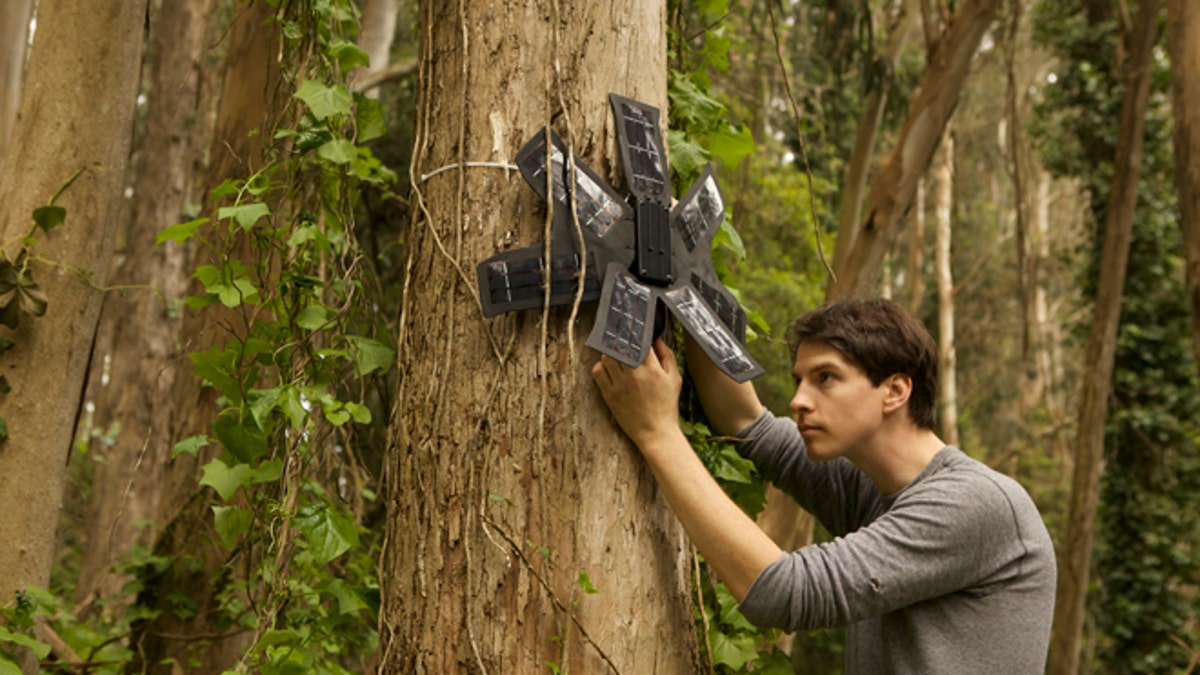
(Courtesy of Rainforest Connection)
The latest iteration of Topher White’s device looks a little like the kind of flower that the creators of the “Matrix” movies might have dreamed up: A repurposed smartphone surrounded by the recycled shards of solar panels.
Affixed high up on the trunks of trees in the rainforest, these high-tech flowers should ideally blend into their environment as much as possible, White, the CEO and founder of Rainforest Connection, told Fox News Latino recently.
The 32-year-old San Francisco native tricked out cellphones with high-powered microphones.
Each device can cover more than a square mile of rainforest, picking up the sounds of illegal logging activity and relaying the coordinates instantly to rangers in the field who can then intervene.
“You can spend a lot of money on people to actively guard small areas of the forest,” White said, “or you can set up a bunch of these monitors and cover a much larger area.”
Rainforest Connection carried out a pilot test last summer in Sumatra, Indonesia, and has recently completed a Kickstarter campaign that brought in $167,000 from 2,844 donors to fund start-up projects in Brazil and the Congo. “Before that,” White said, “we were entirely self-funded.”
In the Amazon, the group is partnering with the NGO Equipe de Conservaçao Amazônia and the Tembé people, who live in a 2,300 sq. mile reserve in the far north of Brazil.
“There’s really good cellphone service there,” White told FNL. “The people there are on their phones and Facebook all day.”
At the moment, the phones can principally distinguish the sound of chain saws, but the hope is that they eventually will be able to recognize the sound of motorized trucks associated with logging, gunshots and animal distress calls to monitor poaching.
White, who has worked at a nuclear fusion research lab in France as well as a sports marketing firm in San Francisco, has been raising money and putting together a team for the last 12 months. He expects to visit the sites in the next month or two.
“That’s the hard part,” he said. “We have to make sure what we’re building works for the people there.”
But what’s with the solar panels in the shape of petals?
“There’s surprisingly little light that gets in under the tree canopy in a rainforest,” White said. “A few rays of light that last only a couple of seconds. We have to trap whatever energy we can get to keep the phones powered up.”
